65 F. high temperature in the Twin Cities Monday.
62 F. average high for April 23.
48 F. high temperature a year ago, April 23, 2011.
22.3" snow fell this past winter season in the Twin Cities.
86.6" snow had fallen last winter, as of April 23, 2011
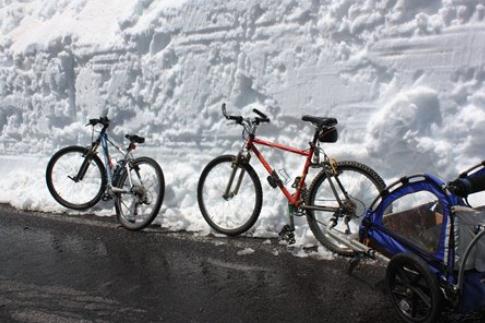
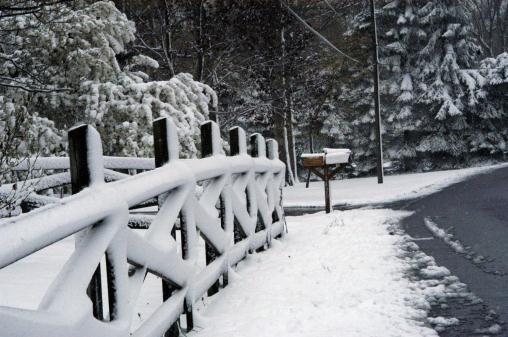 1928
1928: last time there was a bigger snowstorm so late in the season. As much as 4-10" snow smothered the higher terrain of West Virginia, western Pennsylvania and far western New York State.
Upper Left Photo credit above: "
Bob Bower, of Beckley, cleans snow off vehicles at Carriage Car Company on Harper Road in Beckley, W.Va., Monday, April 23, 2012. (AP Photo/The Register-Herald, Rick Barbero)."
Upper Right Photo credit above: "
Snow covers Kemp drive in Frostburg, Md. on Monday, April 23, 2012. A nor'easter packing soaking rain and springtime snow churned up the Northeast on Monday, unleashing a burst of winter, closing some schools and triggering power outages in communities that were basking in record warmth a month ago. (AP Photo/The Times-News, Ken Nolan)."
Could Climate Change Be A Big Driver In Corn Volatility? Details below from Bloomberg Businessweek.
Climate Change Is A Threat, And A Massive Business Opportunity. In Part 1 of my Bloomberg Businessweek series I talked about the threat, the accumulation of coincidences that got my attention back in the mid-90s, a snowball of evidence that has been growing ever since. In Part 2 I focus on solutions. I'm not in a global-warming-funk. We'll figure out solutions to adapt to a warmer, stormier (drier) world, and new ways to keep the lights on and the economy powered up, without using the atmosphere as a convenient carbon sewer. Details below the 7-Day. Photo credit: Bloomberg Businessweek. Photos courtesy of Bloomberg.
Dueling Weather Models:
 Blowing Warm And Cool
Blowing Warm And Cool. The (American) models hint at 70 today, possibly mid 70s Wednesday before an inevitable temperature tumble starting Thursday. Models hint at a slight chance of a light frost early Sunday (if skies clear and winds ease). No, it's still too early to plant annuals - wait until after Mother's Day to be sure.
 ECMWF Solution
ECMWF Solution. Although not as mild for Wednesday, the European model (often more reliable beyond 48 hours) shows a similar cool-down by Thursday and Friday, highs holding in the 40s Saturday with a cold rain, but a very salvageable Sunday - highs in the mid 50s. We should see 60s again next week. Our on-again, off-again spring continues to limp on...
 Rainfall Amounts From Recent Nor'Easter:
Rainfall Amounts From Recent Nor'Easter:
…CONNECTICUT…
- HARTFORD/BRADLEY INTL ARPT 2.67
- NEW HAVEN 2.56
- BRIDGEPORT 2.54
- STAMFORD 2.44
- DANBURY MINI ARPT 2.43
- WILLIMANTIC/WINDHAM ARPT 2.34
- GROTON/NEW LONDON 2.31
- MERIDEN/MARKHAM MUNI ARPT 1.82
…DELAWARE…
- WILMINGTON ARPT 1.97
- DOVER AFB 1.89
- GEORGETOWN/SUSSEX CO. ARPT 1.67
…MASSACHUSETTS…
- NORWOOD MEMORIAL ARPT 2.63
- FITCHBURG 2.62
- BEVERLY MUNI ARPT 2.54
- WESTFIELD/BARNES MUNI ARPT 2.50
- WORCESTER MUNI ARPT 2.50
- EAST MILTON 2.45
- LAWRENCE MUNI ARPT 2.41
- BOSTON/LOGAN 2.31
- TAUNTON MUNI ARPT 2.29
- NEW BEDFORD MUNI ARPT 2.23
- WESTOVER AFB/SPRINGFIELD 2.02
…MARYLAND…
- PATUXENT RIVER NAS 2.49
- SALISBURY RGNL ARPT 1.90
- OCEAN CITY MUNI ARPT 1.65
…MAINE…
- BIDDEFORD 3.5 SE 3.65
- SACO 2.2 SE 2.90
- WELLS 3.5 SW 2.87
- PORTLAND INTL JET 2.86
- WESTPORT ISLAND 2.9 NE 2.36
- ROUND POND 0.7 SSW 2.35
- AUBURN 2.5 NNE 2.30
- AUBURN-LEWISTON MUNI ARPT 2.08
- FRYEBURG 1.88
- AUGUSTA STATE ARPT 1.77
…NORTH CAROLINA…
- HATTERAS/BILLY MITCHELL AP 3.18
…NEW HAMPSHIRE…
- NEW BOSTON 2.4 S 5.04
- GREENLAND 1.5 SSE 3.00
- RANDOLPH 1.4 NE 2.83
- PEASE AFB/PORTSMOUTH 2.68
- NASHUA/BOIRE FIELD 2.22
- ROCHESTER/SKYHAVEN ARPT 1.78
- JAFFREY MUNI ARPT 1.75
..NEW JERSEY…
- WEST PATERSON 3.14
- NEWARK 2.96
- BELMAR/FARMINGDALE 2.30
- CALDWELL/ESSEX CO. ARPT 2.27
- WILDWOOD/CAPE MAY CO. ARPT 2.27
- TRENTON/MERCER CO. ARPT 2.14
- MOUNT HOLLY 2.08
- MCGUIRE AFB/WRIGHTSTOWN 2.02
- ANDOVER/AEROFLEX ARPT 1.95
- SOMERVILLE 1.95
…NEW YORK…
- SCHENECTADY 5.6 SSW 3.76
- ALTAMONT 2.7 SSW 3.74
- MIDDLE ISLAND 0.8 ESE 3.32
- FREEHOLD 3.4 E 3.30
- UPTON 3.30
- HOPEWELL JUNCTION 2.4 SSE 3.14
- SHIRLEY/BROOKHAVEN ARPT 3.13
- ISLIP/MACARTHUR 2.95
- MONTAUK AIRPORT 2.91
- CENTRAL PARK 2.76
- NEW YORK/JFK 2.39
…PENNSYLVANIA…
- POTTSTOWN LIMERICK ARPT 2.28
- DOYLESTOWN ARPT 2.08
- PHILADELPHIA INTL ARPT 1.97
- ALLENTOWN-BETHLEHEM 1.76
…RHODE ISLAND…
- PROVIDENCE 3.14
- WESTERLY STATE ARPT 2.48
- NEWPORT 1.87
…VIRGINIA…
- NORFOLK INTL ARPT 2.25
- FORT EUSTIS/FELKER 2.18
- LANGLEY AFB/HAMPTON 1.83
- RICHMOND 1.79
"
But, because of the Dual-Pol, some of the things, that if you have a circulation that's strong enough, if it's picking up debris, we've had some examples of it being straw and leaves and other things. If it's being picked up by a circulation and there is a tornado in it and it's lifting that debris high enough that it reaches the radar beam, we see that information within the hook or near the hook and that gives us much more of a confirmation that something in fact is going on on the ground. Because not every hook echo is going to produce a tornado." - from an al.com article below about the promise of new "dual polarization" Doppler from The National Weather Service being able to detect the signature debris field of a tornado on the ground.
Thinking The Unthinkable. "
On Nov. 12, 2005, a storm that spawned several tornadoes passed through Iowa State’s campus and football field at Jack Trice Stadium. The severe weather struck shortly before the Cyclones played the Colorado Buffaloes." - from an article at The Des Moines Register below, asking a terrifying rhetorical question: what would happen if a large, violent tornado approached a venue (ballpark or mall) where thousands or tens of thousands of people are gathered?
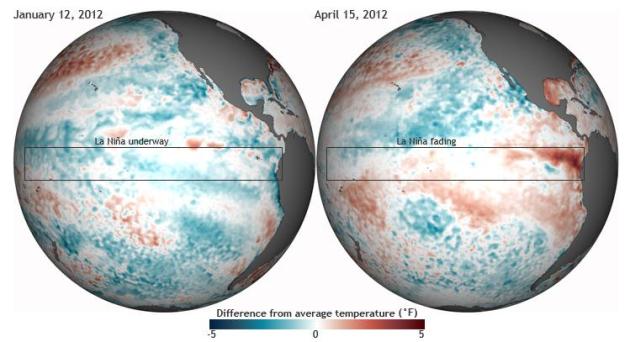 La Nina Fading; Likely Gone By End Of April.
La Nina Fading; Likely Gone By End Of April. The cyclical cooling phase of equatorial Pacific Ocean water is returning to normal. It still baffles me that, in spite of a cool/La Nina phase, the lower 48 states experienced the 4th warmest winter on record. How is that possible? Remember the dire warnings last October: "Much colder/snowier over the northern tier states". Right. It just goes to show you how much trust you should put into a 3-6 month forecast. NOAA's
ClimateWatch division has the details: "
Sea surface temperatures in the eastern tropical Pacific Ocean swing back and forth every few years (sometimes more) like an irregular pendulum. The warm phase is known as El Niño; the cool phase—which it has been in for the past two winters—is called La Niña. According to NOAA’s April 2012 ENSO Diagnostics Discussion, La Niña is fading and will likely be over by the end of April. The pair of maps shows the difference from average temperature in the tropical Pacific near the winter peak of the La Niña event on January 12 and on April 15. Places where the ocean was up to 5 degrees Celsius colder than the 1981-2010 average are dark blue, average temperatures are white, and places where temperatures were up to 5 degrees C warmer than average are red."
"
These are beautiful and wonderful phenomenon," she said, "and I can understand everyone wanting to get a look at it. But to put yourself in danger like that, and to put others in danger, is just bad." - from a story below about the safety perils of chasing tornadoes. Photo courtesy of WeatherNation TV meteorologist Aaron Shaffer.
69,985 warm weather records during the last year, nationwide. Source: NOAA
NCDC.
19,195 cold weather records during the last 365 days.
Last Weekend's Storms May Have Brought Unexpected Mix Of Gulf Coast Insects To Nebraska. Here's an excerpt of a fascinating post from
The Republic, in Columbus, Indiana: "
A severe storm system that pummeled the Midwest last weekend appears to have brought some unexpected visitors to Nebraska. Leon Higley, a University of Nebraska-Lincoln entomologist, told the Lincoln Journal-Star (http://bit.ly/J1T7Hy) that moths and butterflies not typically seen in the state have been spotted in Lancaster County. The sightings have included the black cutworm moth and a dead painted lady butterfly that Higley himself saw on campus. "My guess is it was blown up from the Gulf states," he said. "They don't overwinter."
* NCDC has a (long) list of all the warm weather records set in March
here.
Amazing But True. The following locations (above) observed daily LOW temperatures that were warmer than the previous record HIGH temperature for that day. Source:
NCDC.
A Tale Of 3 Seasons. A nearly 30-degree temperatures spread across Minnesota Saturday whipped up powerful winds; the atmosphere over far western Minnesota just unstable enough with 60-degree sun for a few tornadic storms. I counted at least 6 separate tornadoes Saturday (no tornado watch was posted ahead of time, as far as I can tell). Meanwhile the same stubborn storm was squeezing out heavy wet snow over the Iron Range, nearly 6" up at Orr! Thanks to the
San Diego office of the National Weather Service for making this interactive tool available.
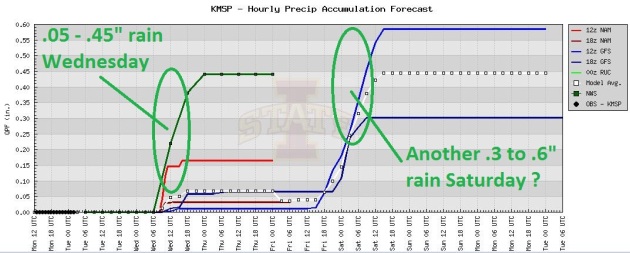 Two Rain Opportunities
Two Rain Opportunities. An atmospheric tug-of-war plays out overhead late tonight and Wednesday, sparking a few rounds of showers and (heavy) T-storms. Another southern storm may drop another .5" rain late Friday into Saturday. Right now Sunday looks like the nicer, drier day of the weekend. Yep, already focused like a laser on the upcoming weekend.
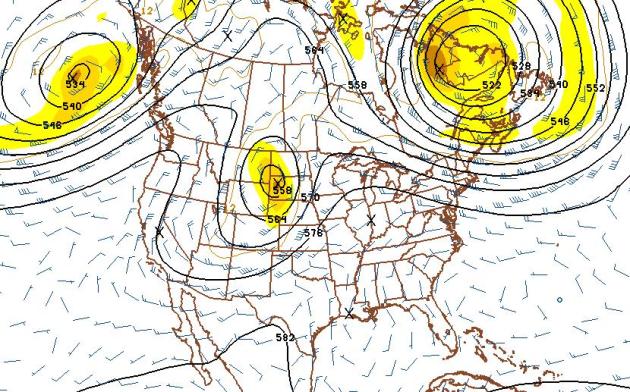 GFS Extended Outlook: Unsettled, But Looking More Like (Late) Spring
GFS Extended Outlook: Unsettled, But Looking More Like (Late) Spring. The GFS solution valid May 9 shows a "cut-off" low over the Dakotas, sparking another round of showers and T-storms the second week of May. In general the core of the jet stream is lifting north, which should mean more numerous 70s, even a few 80s by mid-May.
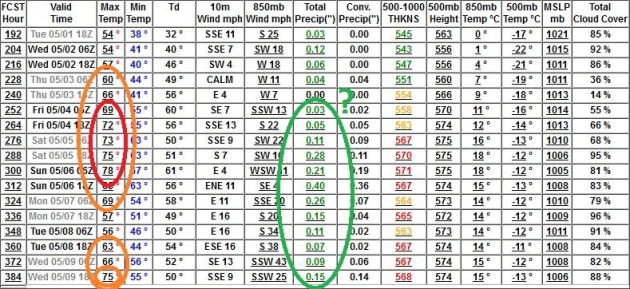 May: Spring Stages A Comeback
May: Spring Stages A Comeback. Yes, we've had a few "correction", coming on the heels of jaw-dropping March warmth east of the Rockies. At least it didn't snow. The GFS shows 60s and 70s after May 2. We're due for a spell of shorts and T-shirts.
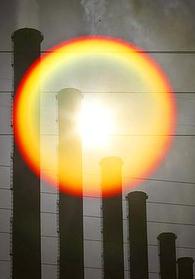
Databank:
11 years of the 21st century have been among the warmest 13 years on record, according to NOAA.
395 parts per million: concentration of carbon dioxide currently in the atmosphere.
280 parts per million: estimates of CO2 concentrations before the Industrial Revolution, in the last 19th century.
"
Global warming is not a linear process. Regional variations and natural phenomena like El Nino or the North Atlantic Oscillation sometimes create the impression that temperatures are cooling. However, on a long-term graph, there is clearly a warming trend. A new study by the British Climatic Research Unit integrating missing measurements from the Arctic also indicates that 2005 and 2008 were in fact both warmer than 1998." - from a story about skeptical science at Germany's Deutsche Welle.
"
Species are straying from their native habitats at an unprecedented rate: 11 miles (17.6 km) toward the poles per decade. Areas where temperature is increasing the most show the most straying by native organisms. The Cetti's warbler, for example, has moved north over the last two decades by more than 90 miles (150 km)." - excerpt from a Live Science article below. Photo:
rspb.org.
"
Unfortunately, NOAA’s greenhouse gas monitoring program has been cut back by Congress in recent years, Lehman said. “Even if we lack the will to regulate emissions, the public has a right to know what is happening to our atmosphere. Sticking our heads in the sand is not a sound strategy,” he said." - from a Summit County Citizens Voice article on threats to greenhouse gas monitoring below. Graph above: NOAA.
"
Probably the most serious and urgent challenge faced by the physical world now is the threat of climate change," he added. "This will disproportionately affect those in poorer countries, for it is there that climate extremes will be most severe and where there is little capability to adapt to them." - from an article at The Christian Post below.
"
A recent study suggests the devastating and deadly Russian heat wave of 2010 was made three times more likely because of global warming caused by human activity."
Quote from climate scientist Heidi Cullen at Princeton's Climate Central, in a Daily Beast article below.
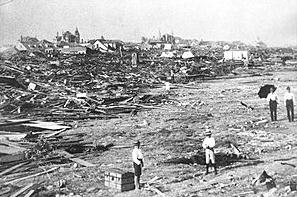 Deadliest Hurricanes In U.S. History.
Deadliest Hurricanes In U.S. History. Vickie Frantz from
AccuWeather has an interesting story; here's an excerpt: "
The top five deadliest hurricanes to impact the U.S. claimed the lives of about 15,200 people and impacted the states of Florida, Georgia, Louisiana, South Carolina and Texas.
Galveston, Texas
Galveston was impacted by a hurricane that made landfall as a Category 4 storm on Sept. 8, 1900. Winds were estimated to be in excess of 140 mph. The storm surge reached 15.7 feet, according to the National Oceanic and Atmospheric Administration (NOAA)."
Photo credit above: "
In this September 1900 file photo, a large part of the city of Galveston, Texas, was reduced to rubble after being hit by a surprise hurricane on Sept. 8, 1900. More than 6,000 people were killed and 10,000 left homeless from the storm, the worst natural disaster in U.S. history. Hurricane Ike's eye was forecast to strike somewhere near Galveston late Friday, Sept. 12, 2008, or early Saturday, then head inland for Houston. (AP Photo/File)."
Technology Has Altered The Way We Get Severe Storm Information. Here's an excerpt of a very worthy and information-filled post from
al.com: "
From forecasting to storm spotting to surveying the aftermath, technology has changed the way everyone deals with the inevitable reality of a tornado. And the odd thing is that technology has so permeated our everyday lives, that much of the way the public gets severe weather information is taken for granted. For example, Doppler radar is a household phrase now, but it hasn't always been the case. Jim Stefkovich, who is the meteorologist in charge for the National Weather Service in Birmingham, said when he first started his career 30 years ago, the radar used to track storms was based on 1957 technology, and a lot of time was wasted just issuing a severe weather warning."
Illustration above: Kenneth Carter, al.com.
Storm-Chasing "Morons" Hinder Rescues. As tornado-chasing becomes more popular you knew this was going to happen.
The Portland Press Herald has more details: "
KANSAS CITY, Mo. - Given life-threatening wind, hail, lightning and flying debris, chasing tornadoes would seem harrowing enough. Now add to that what many agree is a new and growing danger on the edge of the violent vortexes: people -- hundreds and hundreds of regular people. People risking their lives, gawkers clogging roadways, some with kids in the backseats of their cars or in the beds of their pickups. They sit poised with cellphone cameras, stop dead in the middle of lanes beneath roadway bridges, travel at breakneck speeds for the chance to get up close and personal with one of nature's most awesome and awful displays."
A Reluctant Spring At Yosemite. More details from Yosemite National Park, via
Facebook: "
Crews plowing the Tioga Road have reached Yosemite Creek and are seeing below-average snow amounts. Snow depths are up to three to five feet. Despite the below-average snowpack, full avalanche precautions are still in place. There is no estimated opening date for the Tioga Road. (The Glacier Point Road opens for the season at 5 pm today.)"
Reviewing The St. Louis April 22, 2011 Good Friday Tornadoes. Details from the
St. Louis office of The National Weather Service: "
Two tornadic supercells crossed the St. Louis Warning Area during the afternoon and evening hours of Good Friday, April 22, 2011. The northern most supercell spawned an EF-4 tornado that ripped a 21 mile path of destruction across St. Louis County in Missouri and Madison County in Illinois. Municipalities that were affected include Maryland Heights, Bridgeton, St. Ann, Edmundson, Lambert St. Louis International Airport (City of St. Louis), Berkeley, Ferguson, and Pontoon Beach/Granite City. Remarkably, there were no fatalities with this event. This can be attributed to the 34 minutes of tornado warning lead time, wall to wall media coverage, and the actions of those in the direct path of the tornado."
When Severe Weather Strikes, Would You Know How To Evacuate Public Spaces? It's one of our biggest nightmares: an EF-3 tornado stream-rolling toward Target Field (which has its own dedicated meteorologist - Craig Edwards - keeping an eye on Doppler) or MOA, or any other venue with thousands or tens of thousands of people clustered in one place. Do these ballparks (and malls) have evacuation plans? Where would people even be able to find shelter from 100-150 mph winds?
The Des Moines Register has a thought-provoking article; here's an excerpt: "
Weather reports showed strong storms and the possibility of tornadoes headed toward Des Moines last Saturday night, and Bob Swanson, head of security at the Iowa Events Center, wanted his staff prepared. The Iowa Barnstormers arena football team was playing that night. He called a morning meeting to make sure everyone was up to speed on evacuation procedures, nearby tornado shelters and crowd management if things got rough. That night, though, as with many emergencies, circumstances threw a curveball: The fire alarm went off, and an automated public address message told fans to head for the exits — just as the teeth of a thunderstorm and damaging high winds bore down on the capital city."
Housing Solution For The Next Natural Disaster? House In A Box, Maybe. Here's an intriguing story (and concept) from AP and
The Star Tribune: "
NEW ORLEANS - In one of the neighborhoods hit hardest by flooding in Hurricane Katrina's aftermath, developers have built a prototype house that's aimed at providing a quick housing solution for areas blown away by hurricanes and tornadoes or knocked down by earthquakes. The dwelling in the Lakeview section of New Orleans is somewhat box-like, with a roof that slants inward and an arched structure in front that forms a covered front porch. But style isn't the purpose of the house that's meant to go up quickly after disasters and then serve as permanent housing that can withstand future calamities. It's designed to be environmentally friendly, survive outside damaged utility grids and can be shipped in pieces in a single container and assembled like an erector set."
"We Are Vermont." How to prepare for a flood beyond the scope any of us can imagine? Here are some suggestions at
Times Argus Online: "....
Describing the goals of a “flood resilience” strategy is relatively easy. Flood resilience is first and foremost about minimizing flood damage to our communities. It means protecting our roads and buildings from being washed away. Being resilient means that we have designed our communities to ensure that no one will be swept downstream or stranded by high waters, and that basic health and public safety protections will remain in place.
This kind of resilience requires planning, foresight and careful attention to a host of issues including the role of our natural environment in minimizing flood damage.Everything on the Vermont landscape is connected. Every action we take on the land and in the rivers has a reaction."
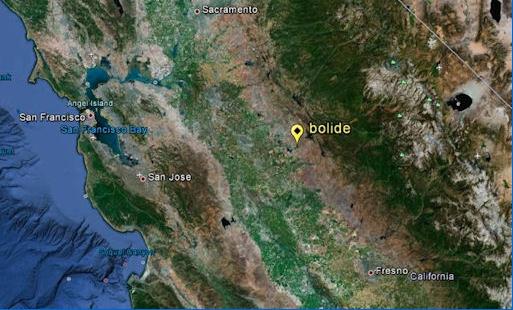 Sierra Fireball Decoded. SpaceWeather.com
Sierra Fireball Decoded. SpaceWeather.com has more information about the spectacular (minivan-size) meteorite that exploded high above California Sunday, releasing energy estimated at 3.8 kilotons: "
On Sunday morning, April 22nd, just as the Lyrid meteor shower was dying down, a spectacular fireball exploded over California's Sierra Nevada mountain range. The loud explosion rattled homes from central California to Reno, Nevada, and beyond. According to Bill Cooke, head of NASA's Meteoroid Environment Office, the source of the blast was a meteoroid about the size of a minivan."
 How To Delete Yourself From The Internet
How To Delete Yourself From The Internet. Here's a fascinating (if not frustrating) story from CNET
and
Yahoo: "The Internet companies that power your online life know that data equals money, and they're becoming bolder about using that data to track you. If they get their way, your every online step would be not only irrevocable, but traceable back to you. Fortunately, there are some positive steps you can take to reclaim your online history for yourself. The online privacy software company Abine, which makes
Do Not Track Plus, also offers a service called
DeleteMe, which removes your data from numerous tracking sites and keeps it from coming back. In an unusual gesture, though, they've made public how to do for yourself
everything that DeleteMe does. Here's my take on their advice.
Be warned, though. The following are not easy instructions, and it's not because they're technically complex."
The Winning Streak: HBO And The Future Of Pay-TV. Here's a terrific article from
The Economist: "
HBO turned over $4 billion in 2010, estimates SNL Kagan, a research outfit. The previous year it accounted for one-quarter of the operating profit of its parent, Time Warner (which made $4.5 billion in all). Because the media conglomerate, once the world’s biggest, has slimmed down, and some of its businesses, such as magazines and DVDs, have been hit by the downturn, HBO has never looked more important to it. But things are getting tougher. HBO is assailed by competition from old-media peers and new-media upstarts. The pay-TV ecosystem on which it depends is ailing. The way HBO responds to these pressures will shape the television business for years. The outfit that changed the kind of television people watch is poised to determine how they watch it."
How Social Media Is Taking Over The News Industry. Over the last few months I've discovered how good Twitter (and by extension "Flipboard") are at covering breaking news. No, I don't care what Mr. Smith had for breakfast, but if you choose who you follow on Twitter carefully, specific people (experts in certain fields) and organizations, you can get the news you need long before the networks.
Mashable has an interesting article; here's an excerpt: "
More than ever, people are using Twitter, Facebook and other social media sources to learn about what’s happening in the world as traditional news outlets become increasingly less relevant to the digital generation. American forces’ raid on Osama Bin Laden, Whitney Houston‘s death, the Hudson River plane landing — these are just a few of many major news stories ordinary citizens broke on Twitter first. Professional journalists, meanwhile, use Twitter all the time to break news quickly before writing up full articles. And the business side is going digital too. Online news now generates more revenue than print newspapers."
Launch Your Own Satellite For $8,000. Just how badly do you want to spy on your neighbor...or old girlfriend? Well, at that price we should
all be launching satellites, right?
Gizmag.com has the details: "
Interorbital Systems (IOS), a rocket and spacecraft construction company founded in 1996, is ready to fulfill its 2009 goal of making access to space available to all. Well, at least to anyone who can afford a motorcycle. For US$8K, IOS provides the TubeSat Personal Satellite (PS) Kit, complete with launch to low Earth orbit (LEO)."
Apple iPhone 5 To Be Cased "In Liquidmetal?" Details from the U.K.
Telegraph: "
The iPhone 5, likely to be released later this year, is expected to be cased in a ‘metallic glass’, otherwise known as Liquidmetal, says a Korean news outlet citing ‘industry sources’. The case is expected to be 20 times stronger than the current encasement. According to The Register, ‘metallic glass is a metal alloy, but one with the disordered structure of glass’. The material has been around since the 1990s, but since a new breakthrough in ‘superspeed pulse mould technology’, this type of glass, which is as tough as metal, can now be used for phone casings. An Apple spokesman declined to comment on rumours and speculation."(full disclosure: I own Apple stock, and wish I could buy more at these prices...)
* more (pure) speculation on the upcoming (October?) release of the iPhone 5 from
eWeek.com.
* photo above courtesy of
cultofmac.com, which has even more speculation about the iPhone 5.
Lamborghini Teams With BMC On (Very) High-End Bicycle. $26,000 for a bike? I thought it was a typo when I first read this eye-opening article at
gizmag.com. Hey, if you can afford to launch satellites for 8k a pop I guess you can afford to ride around town on a 26k bicycle. Good grief. "
While many of us dream of one day owning a supercar, few will ever get the opportunity. The cost of ownership is huge; from the purchase price to the insurance, from the fuel costs to the secure parking. But names such as Lamborghini and Ferrari are revered for a reason. Their automobiles are more like aspirational objets d'art than mere people carriers able to get from A to B. In recent years several of these luxury marques have added their name and design sensibilities to another mode of transport: the humble bicycle. Though these cross-bred beasts are far from humble. We've already seen the likes of Porsche, BMW and McLaren add their expertise to bike manufacturing, and now Italian supercar producer Lamborghini has joined the burgeoning list."
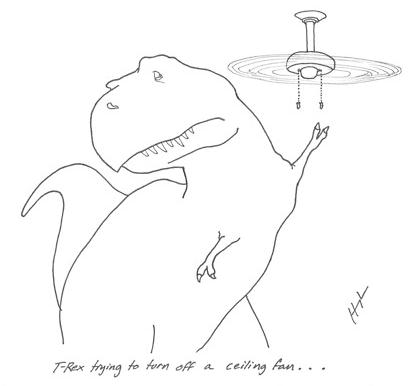
 "T-Rex Trying To Turn Off Ceiling Fan" "T-Rex Trying To Flip A Pancake..."
"T-Rex Trying To Turn Off Ceiling Fan" "T-Rex Trying To Flip A Pancake..."
Check out the complete collection from
T-Rex Trying (soon to be a book). You can even buy a T-Rex T-short. No I get no commission - just thought this was worth sharing. I
appreciated the chuckle...
"Watering The Backyard". Poor Frank down at KPRC-TV in Houston. Well, it has been dry down there. It may not be what you think in his TV weather "backyard". The details you NEED to know from
TVspy.com: "
Sensing that the image would inevitably go viral, Houston NBC-affiliate KPRC recently posted a screenshot on its Facebook page of a man who appears to be taking a leak in the station’s weather garden, feet behind chief meteorologist Frank Billingsley. “Since this will go viral any way, we might as well let you know it’s not what you think,” KPRC wrote on its Facebook page, posting the above photo. “That guy is an electrical contractor stringing wires in our weather garden. In case you’re wondering, yep, we’re mortified and laughing at the same time and we picked this frame specifically because Frank’s pose is just the cherry on top of it all.”

 A Perfect Spring Day
A Perfect Spring Day. Yes, late April the way it was probably meant to be in Minnesota: extraordinary. Under a mostly-blue sky highs ranged from 53 at Grand Marais to 65 in the Twin Cities, 67 St. Cloud and 70 at Redwood Falls.
Paul's Conservation Minnesota Outlook for the Twin Cities and all of Minnesota:
MONDAY NIGHT: Mostly clear and comfortably cool. Low: 45
TUESDAY: Lukewarm sun, very nice. Winds: SE 5-10. High: 72
TUESDAY NIGHT: Clouds increase - growing chance of T-storms. Low: 56
WEDNESDAY: Mild and unsettled. T-storms, some strong, possibly severe. High: 75
THURSDAY: Sunny, turning breezy and cooler. Low: 46. High: 56
FRIDAY: Clouds increase, late showers. Low: 44. High: 55
SATURDAY: A cold rain. Wetter day of the weekend. Winds: NE 15. Low: 42. High: 51
SUNDAY: Damp start. Slow clearing. Getting better as the day goes on. Winds: N 10. Low: 39. High: 55
MONDAY: Intervals of cool sun. Dry. Low: 38. High: 58
* A slow warming trend is likely next week, more 60s the latter half of the week.
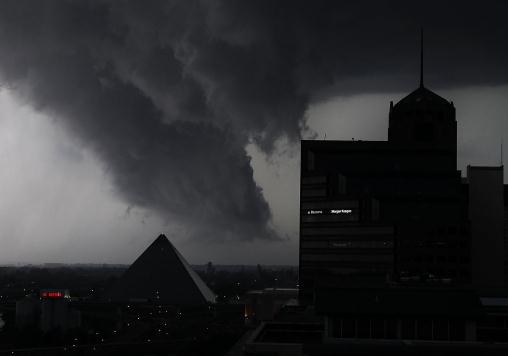
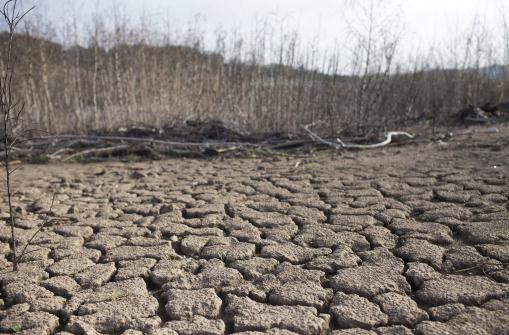
Tornadoes or drought?
According to NOAA America is drier than any time in the last 5 years. The northeast just saw a soaking rain; 1-3 inch amounts were common with a freak late-April snow for Buffalo and Pittsburgh. The locals must be thrilled.
At the risk of making you groan, the Twin Cities haven't seen measurable snow (more than a trace) since March 8. It looks like the 22.3 inch winter total may hold. Just for grins and giggles a year ago the landscape wasn't a hopeful shade of neon-green; there were still nagging snow-piles leftover from 86.6 inches.
NCDC reports that on March 18-19 eight Minnesota towns from Winona to Big Falls "observed daily LOW temperatures that were warmer than the previous record HIGH temperature for that day." I've never seen that before. I've been waiting for the other shoe to drop ever since. I'm still waiting.
After a spell of 70s today and Wednesday we cool into the 50s late week, but I don't see any more metro frosts looking out 2 weeks. No hot fronts in sight, but no nasty winter reruns either. T-storms may be strong/severe Wednesday, another slug of much-needed rain Saturday. We should salvage an OK Sunday.
Drought or tornadoes? Still leaning toward drought.
Climate Stories....
Forecast Calls For Climate-Smart Businesses (Part 2). I recently penned a 2-part series for Bloomberg Businessweek.
Part 1 focused on the threat of climate change, which is probably the biggest environmental challenge we face, as a planet, in the 21st century.
Part 2 highlights the inevitable opportunities for business to be a (big) part of gradually mitigating this threat. As I said in Part 1, there is no silver bullet (which is part of the denial: human nature is such that many people ignore/discount a problem until there's a viable solution). There may not be a silver bullet, but there's plenty of (green) buckshot, thousands of technologies that will help us become more energy efficient, save us money - new inventions that will allow us to keep the lights on and growing our economy without treating the atmosphere as a carbon-sewer. As a meteorologist it was the data that first tipped me off to a morphing climate floating overhead. As a would-be entrepreneuer I see massive opportunity for market-based solutions that save energy (and money) and create viable alternatives to carbon-based fuels; a process that will ramp up more jobs, more employment, and get us to America 2.0. It won't be easy, but as I describe in the Bloomberg article, smart companies aren't wasting any time; they realize the sustainability is (already) good business: "
When will American business wake up to the scientific reality of climate change? When the common-sense moderate middle wakes up. When pragmatic entrepreneurs and investors realize an intransigent, inflexible and, worst of all, factually incorrect political stance could lose the U.S. global influence and mountains of cash. We risk our technological and engineering -- and moral -- leadership to other countries if we continue to deny and debate established science. I'm a moderate Republican, a Penn State-trained meteorologist and small-business owner, and I’m disheartened by my party’s refusal to acknowledge the physical evidence of climate change. The denial is disconcerting in and of itself, but it could also have serious and long-term economic consequences."
Photo credit above: "
A boy leaping from a sand dune, Cape Cod, U.S. Photograph by National Geographic" - courtesy of Bloomberg Businessweek.
Climate Change Main Contributor To Corn Volatility, Study Says. A timely article from
Bloomberg Businessweek; here's an excerpt: "
The impact of climate change on corn-price volatility outweighs movements caused by energy market policies and oil prices, according to research published in the journal Nature Climate Change. “U.S. corn-price volatility exhibits higher sensitivity to near-term climate change than to energy policy influences or agriculture-energy market integration,” researchers Noah S. Diffenbaugh, Thomas W. Hertel, Martin Scherer and Monika Verma wrote in a paper published in the journal yesterday. The presence of a biofuels mandate enhances sensitivity to climate change by more than 50 percent, they wrote. Corn, the primary feedstock used to make ethanol in the U.S., has dropped 6.5 percent this year as U.S. growers plant the most acres since 1937, the government estimates."
Photo credit above: "
A farmer in Ines Indart, Argentina. Photographer: Diego Giudice/Bloomberg."
Earth Day: Discussing The Coming Climate Crisis With Heidi Cullen. Here's an excerpt of a must-read article from
The Daily Beast: "
First, we can measure chemical isotopes of CO2 in the atmosphere. We know where CO2 comes from—because these molecules have chemical fingerprints. CO2 from different sources has different mixes of carbon isotopes. Scientists use instruments called spectrometers that chemically separate the kinds of carbon found in fossil fuels from the kind normally found in air and water. We know which CO2 molecules were put into the atmosphere there by us. For instance, there is no C-14 in CO2 molecules that come from fossil fuels. Roughly, one out of every four molecules of CO2 in our atmosphere comes from human activity. It adds up. The increase in CO2 since the start of the Industrial Revolution has mostly been from burning fossil fuels—the remainder comes mainly from clearing and burning forests. Today global atmospheric carbon dioxide concentrations are at 395 parts per million (ppm). Prior to the Industrial Revolution of the late 19th and early 20th centuries, the carbon dioxide level was about 280 ppm."
Percentage Change In Very Heavy Precipitation. Data shows a 31% increase in downpours across Minnesota and the Upper Midwest from 1958-2007, a 67% spike reported in New England. Data and map courtesy of
Groiseman, et all.
Evangelicals "Coming Around" To Evidence For Global Warming, Professor Says. Here's an excerpt of an article from
The Christian Post: "
A professor at an evangelical university in Southern California claims that evangelicals are becoming more convinced of the evidence for man-made global warming ahead of Earth Day this Sunday. Mark Reynolds, assistant professor of Environmental Science at Biola University, said, "Evangelicals, like the rest of our society, are coming around to the real evidence of global climate change. It is a big, complicated topic, with many implications for us in the U.S."
Photo credit above: "
Mark McReynolds, Assistant Professor of Environmental Science at Biola University."
8 Ways Global Warming Is Already Changing The World. Here's an excerpt from
Live Science: "
In the spirit of Earth day, here's a look at our marvelous blue marble and the ways people and other living things are responding to global warming. [50 Amazing Facts About Earth]"
1. Moving the military northward
"As the Arctic ice opens up, the world turns its attention to the resources below. According to the U.S. Geological Survey, 30 percent of the world's undiscovered natural gas and 13 percent of its undiscovered oil are under this region. As a result, military action in the Arctic is heating up, with the United States, Russia, Denmark, Finland, Norway, Iceland, Sweden and Canada holding talks about regional security and border issues. Several nations, including the U.S., are also drilling troops in the far north, preparing for increased border patrol and disaster response efforts in a busier Arctic."
Image credit above: "
This composite image uses a number of swaths of the Earth's surface taken on January 4, 2012. Credit: NASA/NOAA/GSFC/Suomi NPP/VIIRS/Norman Kuring."
NASA's Image Gallery Highlights Earth's Changing Face. Here's a worthy story from
redorbit.com: "
In celebration of this year’s Earth Day on April 22, NASA’s Webby Award-winning Global Climate Change website, http://climate.nasa.gov , has unveiled a new version of its popular image gallery, “State of Flux.” The gallery, which can be found at http://climate.nasa.gov/sof , presents stunning images, mostly from space, of our ever-changing planet, chronicling changes taking place over time periods ranging from days to centuries. Each image pair in the continuously updated gallery highlights before-and-after impacts of change, including the destruction wrought by extreme events such as wildfires and floods, the retreat of glaciers caused by climate change, and the expanding footprint of urban areas due to population growth."
Take Two: Who Should Pay For Damage From Climate Change? Forbes.com has the story; here's an excerpt: "
Every time anyone posts anything on climate change, the discussion degenerates into an exchange of claims and counter-claims. The “denialists” will bring up well-worn talking points that they say proves climate change is a swindle, and the “warmists” will shoot them down. Then comes a second wave, and a third… The flurry eventually peters out, but by then, the only people following the string are the people posting. On Friday, I posted an intentionally provocative piece that I thought would elude this routine but spark an insightful debate about one of the most complex issues facing us today: namely, who should bear the costs of adapting to climate change if the scientists are right? After all, if they are right, this mess is going to drive up food prices around the world, and it’s going to hit indigenous people in Africa, Latin America, and Asia the hardest, and that’s not fair."
Climate Actions Hold Moral Imperatives. An Op-Ed at
The Anchorage Daily News - here's an excerpt: "
After working on climate change for the past seven years, allow me to address the most common responses I have heard for inaction:
• "Action is not feasible, it will cost too much." Answer: That's exactly what people said about the abolition of slavery. Furthermore, the significant reduction in sulfur dioxide pollution in the 1990s, creating acid rain, demonstrates we can successfully reduce air pollution. In 2003, the Office of Management and Budget found the Acid Rain Program accounted for one of the largest quantified human health benefits (over $70 billion/year) of any major regulatory program, with benefits exceeding costs by more than 40:1.
• "Climate action means stopping development." Answer: It's not a question of stewardship or development, stewardship means developing the right way."
How Climate Change Will Effect Pennsylvania.
The Pittsburgh Post Gazette has more details: "
Pennsylvania will get hotter. Precipitation will increase with fewer but more violent storms and less snow cover. Expect adverse impacts on cool-weather crops, air quality, certain tree and wildlife species, including the state bird and fish. And there will be a human impact, especially for those whose health is affected by heat or people who enjoy skiing, snowmobiling and ice fishing. By midcentury, the number of days exceeding 90 degrees Fahrenheit will rise from an annual total of 10 to 40. The number of 100-plus degree days could jump from two to 24 in coming decades."
With Environmental Spotlight On Greenland, More Tourists Want Closer Look. Yep, add Greenland to your travel bucket list.
CNN reports: "
There's a good chance you've seen more of Greenland in magazines or on TV recently. With its ice cap and glaciers melting at a rapid rate, the island is at the center of climate change conversation. The stories are troubling, but it's not all bad news for the folks in Greenland. You see, the increased attention has helped Greenland. Its tourism business is, by Greenland standards, booming. "Our tourism is still very small," said Anders la Cour Vahl, a senior consultant at the Greenland Tourism and Business Council. "But we've seen quite an increase in cruise tourism and an incremental increase in land-based visitors."
How Much Skepticism Can The Climate Take? The story from Germany's
Deutsche Welle: "
Influential skeptics continue to challenge the scientific consensus that CO2 emissions are responsible for climate change. Have they got a point? In January this year, 16 scientists wrote in the Wall Street Journal (WSJ) that they saw no scientific arguments supporting the need for urgent action to combat climate change. They included prominent climate skeptics like MIT Atmospheric Science professor Richard Lindzen as well as the scientists, and former ExxonMobil employees, Roger Cohen and William Happer. Even in Germany, where climate skeptics have less political influence than countries like the USA, a book called "Die kalte Sonne" (The Cold Sun) has been making waves since its publication earlier this year."
* note: the article above refers to "16 scientists in the WSJ" - it should be pointed out that only one of these skeptics was a published, peer-reviewed climate scientist (Richard Lindzen), who's theories about the (non man-made) origins of AGW have have been refuted by the 98% of climate scientists who see a link with greenhouse gas emissions. The recent NASA astronauts who stepped forward to scold their NASA colleagues for acknowledging the science: not one had any climate credentials. It would be a little like me writing a scathing article about using stents in heart transplantation surgery. It's totally out of my area of expertise and (real) experts/cardiologists would be very quick to point that out. Again, anyone is welcome to their opinion - but you're not free to make up your own scientific facts.
No Place For Heated Opinions.
The New York Times delves into a significant (purposeful?) omission in the latest Discovery Channel series, "Frozen Planet" - a planet that isn't quite as frozen as it was 30-40 years ago: “
Frozen Planet,” the seven-hour series that has attracted millions of viewers to the Discovery Channel in recent weeks, shows Earth in extremis. On this planet, the poles are violently cold, yet are also atypically vulnerable to the warming trends that are endangering polar bear populations and causing huge chunks of ice to break off Greenland and Antarctica. All of it — the struggling polar bears, the collapsing ice shelves — is shown in stunning high definition. It is accompanied by the voice of Alec Baldwin, who narrates the series and says categorically, “The ends of the earth are changing.” What the series never assesses, however, is why."
Global Warming: Colorado Researchers Pinpoint Atmospheric Greenhouse Gas Levels With 6-Year Sampling Project. Here's an excerpt of an article at
The Summit County Citizens Voice: "
An intensive long-term monitoring program has enabled researchers to analyze and compare emissions from man-made fossil fuels and trace gases in the atmosphere, which could help measure the effectiveness of efforts to reduce greenhouse gases — but the program is being threatened by budget cuts. “We think the approach offered by this study can increase the accuracy of emissions detection and verification for fossil fuel combustion and a host of other man-made gases,” said CU-Boulder Senior Research Associate Scott Lehman, who led the study with CU-Boulder Research Associate John Miller."
Image credit above: "
A NASA map shows global temperature anomalies in March 2012."






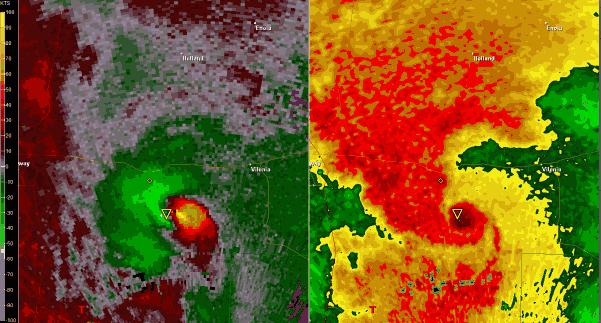





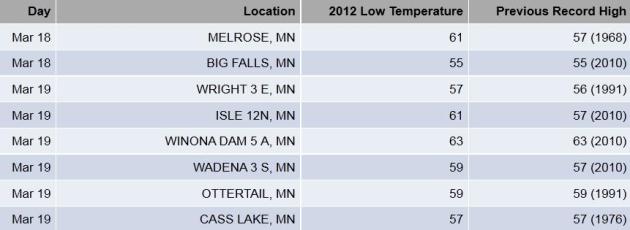
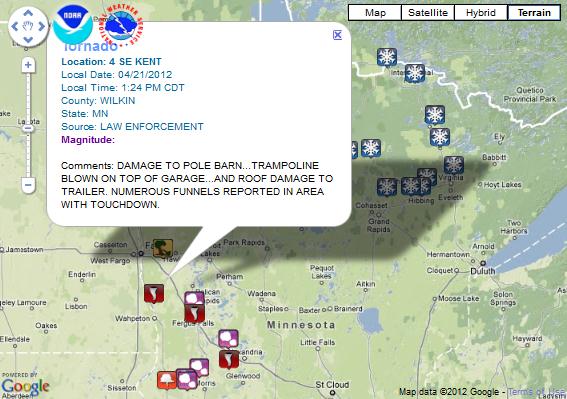







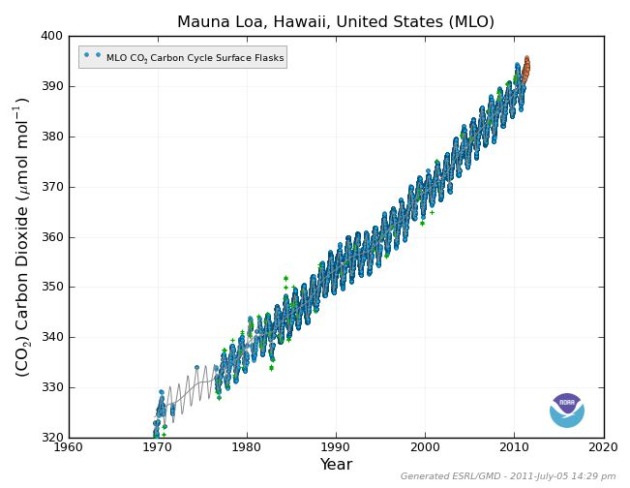
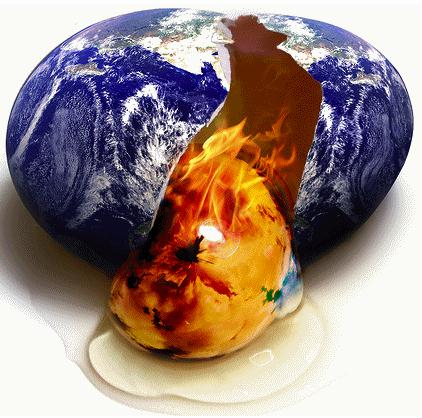
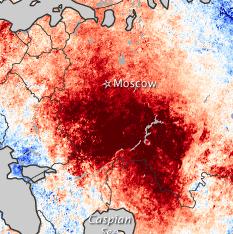


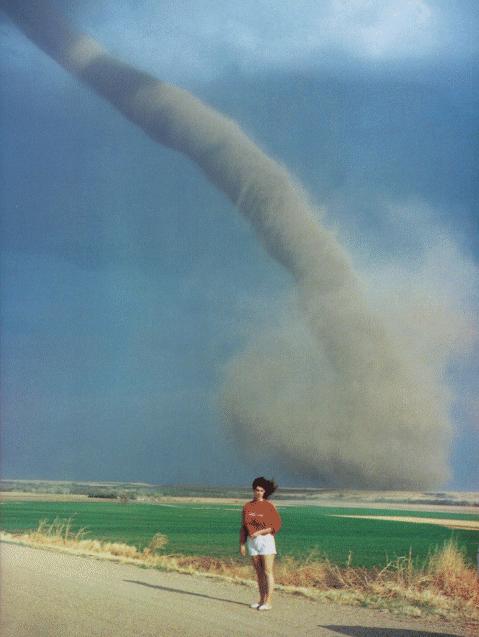

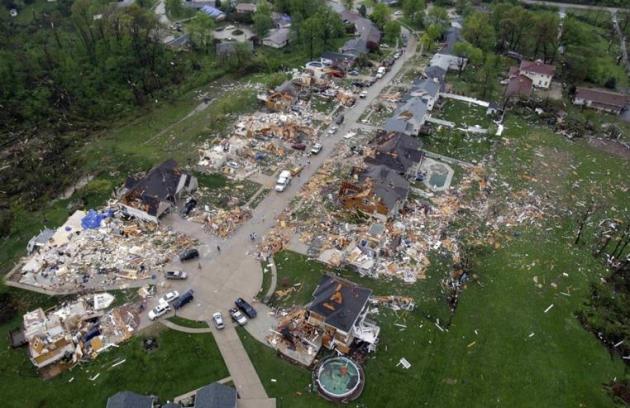
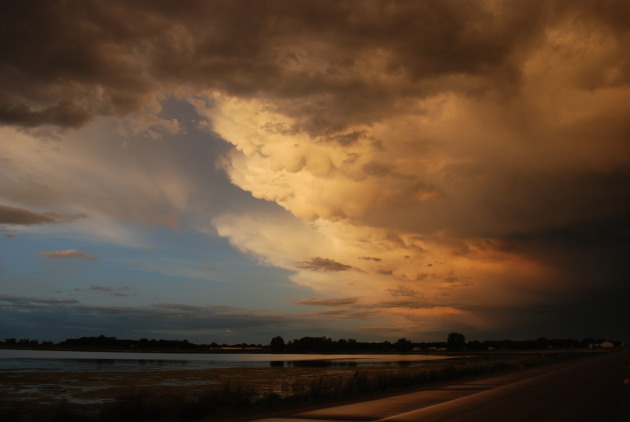

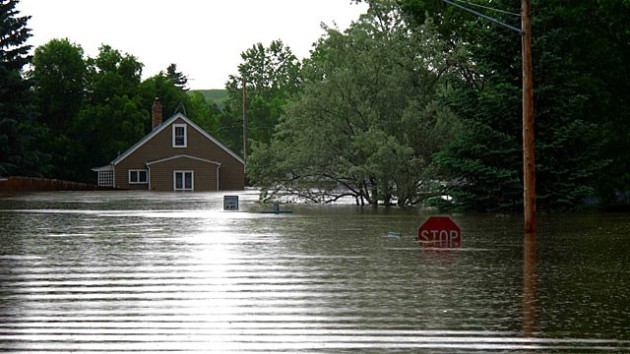



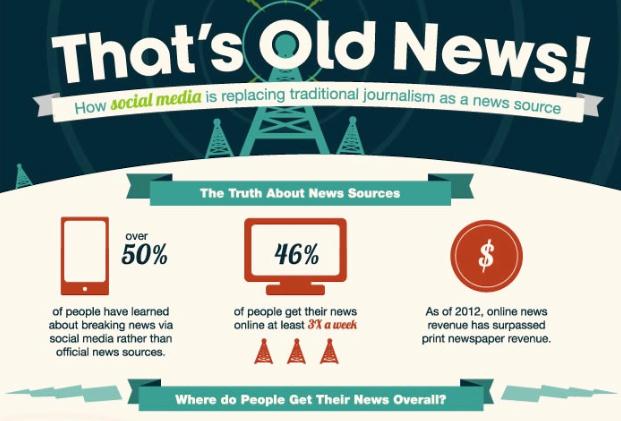
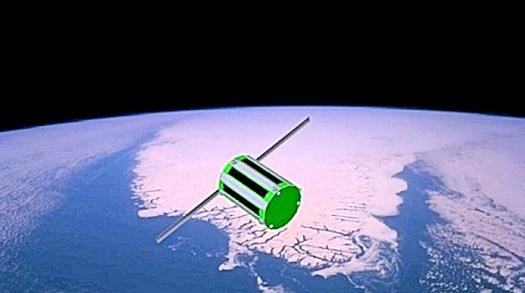




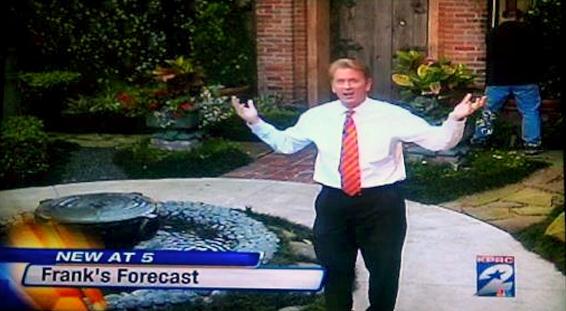


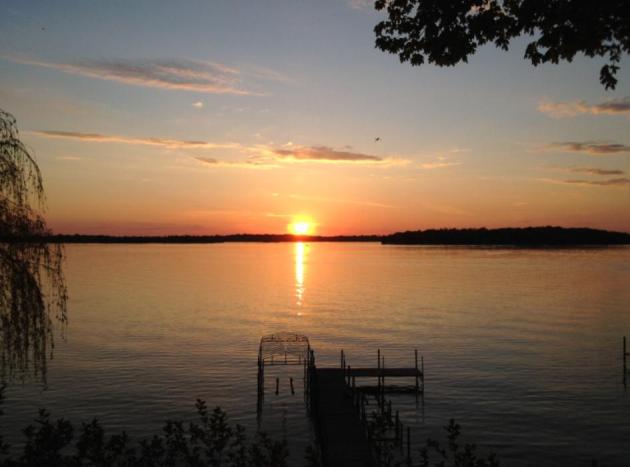







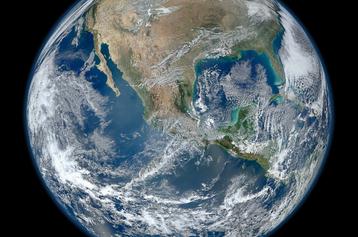




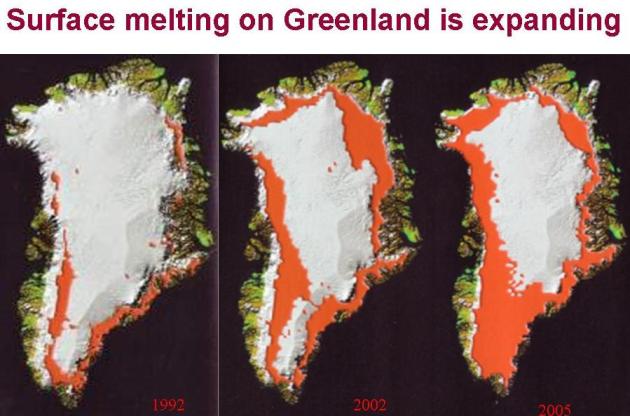


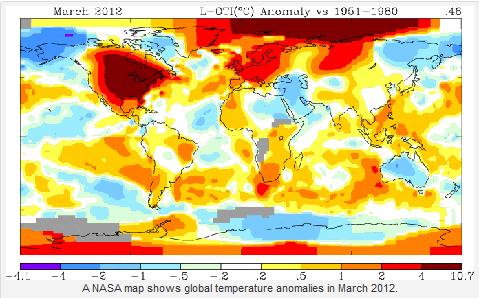
The big hike after 2 months from the actual starting point.
ReplyDeleteCastro Marim Golf Course
I thought it was going to be some boring old post, but it really compensated for my time. I will post a link to this page on my blog. I am sure my visitors will find that very useful.
ReplyDeleteElectrical Contractors Salisbury